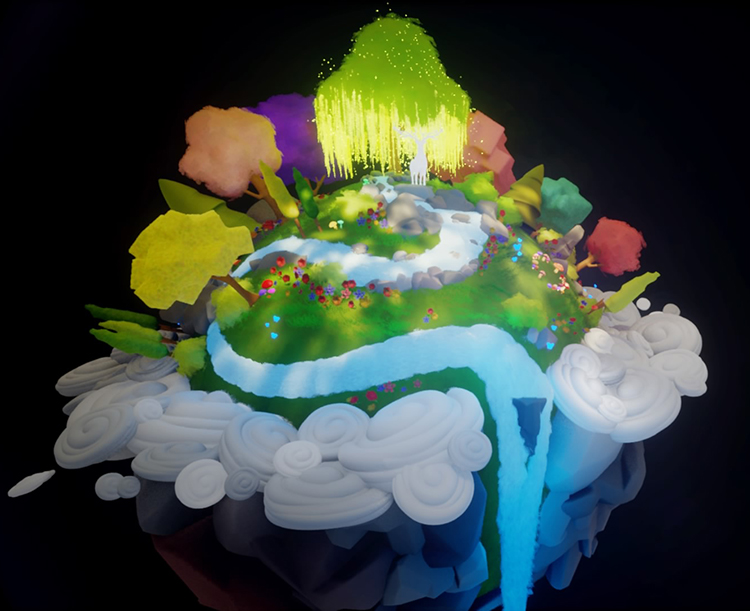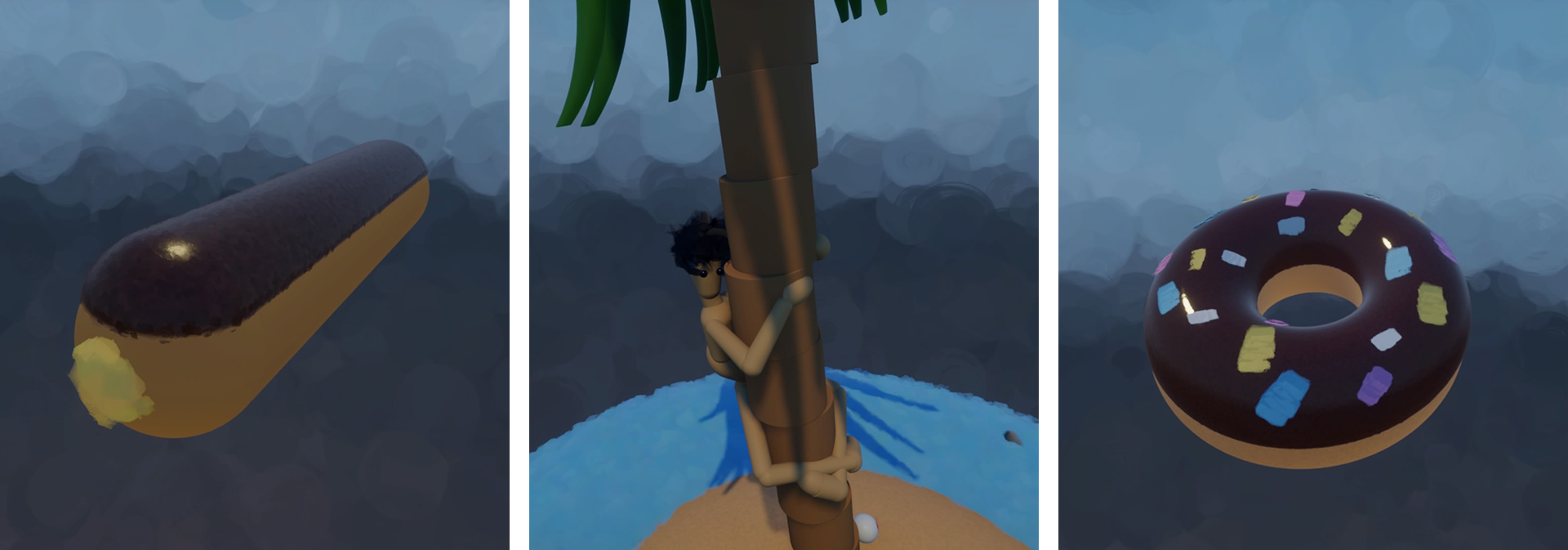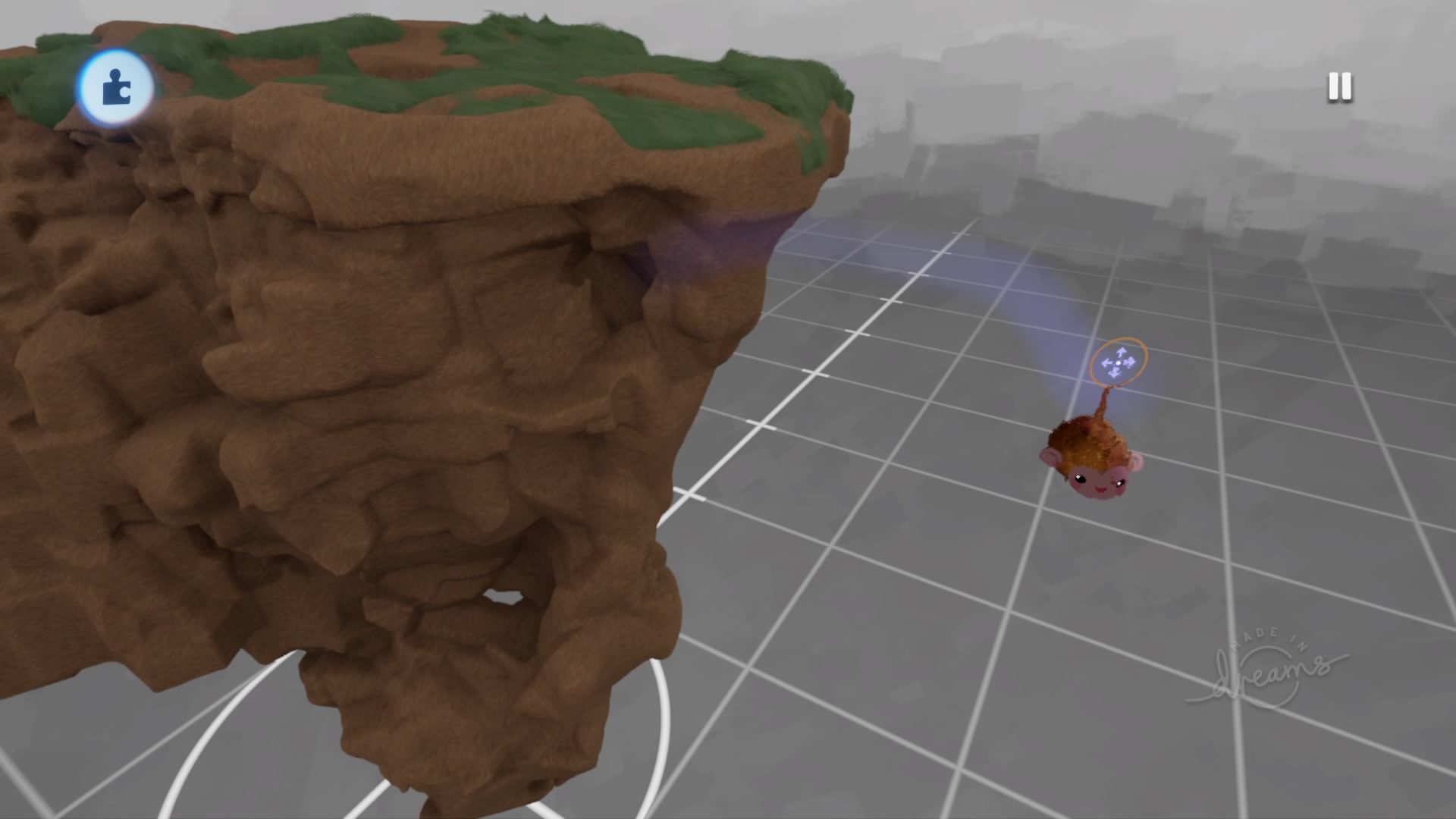More than anything else in my life, art, in all of its forms, has always felt unachievable. I love writing lyrics, but I can’t play any instruments or sing; I have ideas for beautiful illustrations, but I can’t even draw a straight line. I used to try and practice these things, but I’d inevitably grow too frustrated to actually put in the effort to get better. I’m a perfectionist, and if I don’t immediately take to something, I get too discouraged to continue. It’s an unavoidable roadblock, and no matter how strong my desire to create art is, I just can’t move past it. I quit if I’m not good at something, so I never have the chance to improve. It’s a cycle of self-defeat.
While I always liked art growing up, my passion for it grew immensely as a teenager. Media Molecule’s LittleBigPlanet played a formative role for me during that time. The way it blended art and gaming, my two biggest interests, motivated me and gave me an outlet to explore my creativity. The type of levels you could make may have been confined to the 2D side-scroller format, but the community did incredible things despite the restriction. Setting aside hours of my day to play newly uploaded levels showed me just how much potential was hidden within the creation system. I routinely attempted to make my own unforgettable experiences, but learning the physics mechanics proved too challenging, and I could never actually come up with a clear goal or theme for my levels. Not being able to replicate what others were doing, seemingly with ease, discouraged me to the point I stopped trying altogether.

After Media Molecule announced Dreams as its next title back in 2015, it became one of my most anticipated games. I followed its development closely, savoring the rare bits of new info and gameplay impressions that were given throughout the years. The feature that always interested me the most was being able to upload assets for others to use. As someone who could never overcome the struggle to finish levels in the LittleBigPlanet series, I loved the idea of being able to focus on whatever I was passionate about and having my hard work be put to good use by others. Regardless of if I wanted to publish environmental props, music tracks, or logic I coded, I’d be contributing to some larger project. It excited me in a way that other user-generated games never have and made me feel like I could be a part of a thriving community.
Once I was finally able to get hands-on with the closed beta, I knew the long wait had been worth it. While Media Molecule has stayed true to its design philosophy of “play, create, share” since the first LittleBigPlanet launched in 2008, none of the studio’s previous titles have come close to offering what Dreams does. It delivered on its promise of being a dev kit, music maker, and art creation software, all rolled into one affordable package. Access to such a comprehensive suite of tools seemed like a surefire way for me to make incredible art.
Sculpting is something I’ve always been interested in, and the way Dreams intricately recreates the experience in a virtual space is fantastic. I hurried through the prologue in the beta just so I could try it out faster. Finally playing with the sculpting mode made me feel giddy, and the possibilities seemed absolutely limitless. I had so many pieces planned: a scene depicting a shipwrecked survivor clinging to a coconut tree as a shark circled the water steadily rising around his tiny island; a crowded pastry shop run by cat bakers; a herd of wild horses stampeding during a dust storm off in the distance between a canyon. But despite the sculpt mode’s powerful toolset, I couldn’t execute my ideas.

I’d like to cushion the blow to my ego by saying the game is at fault for why I couldn’t get far into those pieces, but it’s a poor craftsman who blames his tools, and Dreams genuinely offered everything I needed in order to make my visions come to life—I just wasn’t skilled enough for my creations to be exactly what I envisioned. The tutorials gave me an understanding of the basics, but they didn’t explore the areas I truly struggled with, and once again I found myself wondering how other players were making such impressive creations. My shipwrecked survivor looked like a failed claymation monstrosity. Precisely recreating desserts for the cat bakery proved more difficult and time-consuming than I had anticipated. And no amount of reworking seemed to help my canyon look natural. When I got too mad at my inability to pull off one ambitious design, I moved on to the next. Eventually, I ran out. After putting hours of work into projects—projects I was initially passionate about—I started to slowly despise them. Like with LittleBigPlanet, I resigned myself to giving up on creation and instead focused on experiencing what other players had made.
Dreams encourages its users to play as much as create, and you’re not punished if you only want to do the former. There are Imp Quests (set milestones that unlock new player avatars) geared solely towards playing. There are also Community Jams every month, and even if you don’t submit anything, voting on creations is vital to the success of the contests. But while I never grew tired of seeing what the community was coming up with, not being able to contribute the way I’d envisioned still stung.

Early Access players were given the retail version a few days before its official launch, and what struck me immediately after playing the updated Dreams was the addition of new tutorials. There were courses on things that had confused me since the beta, like crafting a unique aesthetic and understanding proper level design. These were vital techniques that I never seemed to be able to wrap my head around. As I played through these new tutorials that focused on my biggest shortcomings, I noticed a common theme reiterated by the various Media Molecule artists who instructed the lessons: It’s okay if it’s not perfect.
Hearing this message from the people who’d worked on the game meant I was finally able to internalize something I’d always been too stubborn to truly believe. Those words became a personal mantra as I followed along with the lessons. While it was difficult at first to keep going, this newfound perspective kept me grounded. I realized that nothing I’d make early on could ever look the same as the work of professionals. My creations were nowhere near as polished or beautiful as the ones being demonstrated, but that’s okay. Part of taking baby steps is stumbling along the way.
I think all of us struggle with comparing our work to the accomplishments of others, no matter what kind of work it is. I still compare myself to writers I admire, which always results in my self-esteem being chipped away and any sense of confidence I have dwindling out of existence. But writing is still something I’m comfortable with and have experience doing, and creating other forms of art isn’t. My constant self-comparisons to the work of more skilled artists in Dreams, regardless of whether they were Media Molecule employees or just other players, felt more intense because my attempts to create made me feel so vulnerable. Breaking free from that habit was liberating.
I went back to previous tutorials I had already finished before the retail release, but this time, I paid closer attention. When relearning the game’s music creation, I allowed my tracks to be off-beat and chaotic; with sculpting, I gave myself permission to be messy and ugly. Nothing was the way I originally envisioned, but the learning process resulted in things I was incredibly proud of. Experimenting over and over with soft-blending and custom shapes in sculpt mode, for example, led to me making organic-looking rock formations that were perfect for creating a cliffside in a stormy ocean scene.


If you have no real experience creating art, music, or coding, Dreams can seem daunting. But Media Molecule has done a great job at making sure every tutorial is warm and welcoming, coming across less as a teacher giving you a personal lecture and more as an encouraging friend showing you the ropes. It’s a learning process that feels completely free of judgment—unless, of course, you’re judging yourself.
I always feel like I have to prove my worth, and that if I can’t get something just right, then I need to give up. Learning to let go of my perfectionism will be a continuing process, and Dreams hasn’t magically rid me of the mindset that’s plagued me for so long. But now, thanks to Media Molecule, I’m starting to accept that perfection is an unachievable concept that ultimately restricts you. Failure can be a testament to growth if you let it, and my skills as an artist have started improving since realizing that. I’ll continue to make mistakes—because they’re inevitable—but I’ll use them as an opportunity to learn rather than treat them as proof that I’m not good enough. Art is about expression, and the limitations I’ve imposed on myself with my perfectionism have been holding me back.
Learning from my failure has given me more confidence about my creative potential. I understand the toolset more through trial-and-error, and I’ve gained a stronger grasp on the different artistic techniques I need to utilize. Maybe I won’t ever make a showstopping masterpiece. Maybe I won’t even make something other players consider decent. But what I make will be mine, and all of its flaws will be a proud reminder of my progression as an artist.
Header image: The author’s creation, “An Ocean Storm,” using some assets from other community creators.

Nick Ransbottom is a freelance journalist and former reviews editor for RPGFan. When he’s not making bad puns on Twitter, he’s most likely either putting a few more hundred hours into Monster Hunter: World and Overwatch, or impressing almost no one with his knowledge of Kingdom Hearts lore.